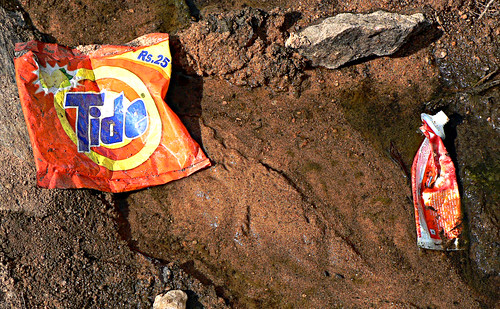 Concerned about contaminated soil affecting your development deal? You have good reason. Here are three very different examples of dealing with soil contamination during — and sometimes after — redevelopment.
Concerned about contaminated soil affecting your development deal? You have good reason. Here are three very different examples of dealing with soil contamination during — and sometimes after — redevelopment.
1. Former South Weymouth Naval Air Station: As noted in this Boston Globe article, portions of the former air station, which closed for military use in 1997, are contaminated with jet fuel, petroleum, solvents, and other hazardous materials. Clean-up efforts have been ongoing for more than ten years. Extensive residential construction will be a key component of the mixed-use development to be known as “Southfield,” so it’s critical that development guidelines for much of the property are unrestricted, as noted by several municipal officials.
In other words, Activity and Use Limitations (AULs) may not “fly” here — at least not those that specifically restrict residential use. The cost of this project will far exceed that of a straight commercial development with AULs in place. Given the EPA’s apparent allowance to limit the amount of remediation by the responsibility party (the Department of Defense), it looks as if a major tussle could ensue between the locals and the feds.
2. Rockport “Gift House”: This is an interesting tale of “damned if you do, damned if you don’t.” In 2001, the then-owner of a single-family residence gifted the home to the town rather than see it demolished to make way for a larger residence. The town accepted the proposal and moved the home to a piece of town-owned real estate in a predominantly residential area. Just one problem: The lot where the home was placed was historically used by the DPW for hazardous material and petroleum storage. While the foundation for the house was being excavated, contaminated soil was discovered.
Since 2002, the town has spent more than $500,000 on the remediation as well as the move itself and other unrelated repairs. The town is correct in saying that the site needed to be cleaned up anyway, and the most recent data suggests that it has been remediated to a level that meets residential criteria. But it would have been beneficial — not to mention more economical — to have tested the soil before the move, as echoed by a municipal employee in this Boston Globe piece. To date, the home remains on the market and has surely suffered from the stigma of its history, even if the land no longer presents a risk to its future owners.
3. Milton Mystery Contamination: File this one under “Never saw this coming….” Soil in the backyards of a number of residences along the Neponset River was found to contain elevated lead and arsenic concentrations. The testing was initiated by municipal officials concerned about elevated PCB concentrations at an adjacent parcel of state-owned land along the banks of the river. Testing on the state’s property lead to testing on the adjacent residential properties.
While PCBs were not found on the residential properties, dredging activities in the 1960s and/or historic use of spray pesticide are suspected to be possible sources for the lead and arsenic. The actual source may never be known. A property transfer on any of the single-family residences would not have included an environmental investigation, so there was little chance a prospective homeowner or lender would have known about this situation ahead of time. While the state is on the hook for the cleanup, the perception of a tainted property could linger well into the future.
